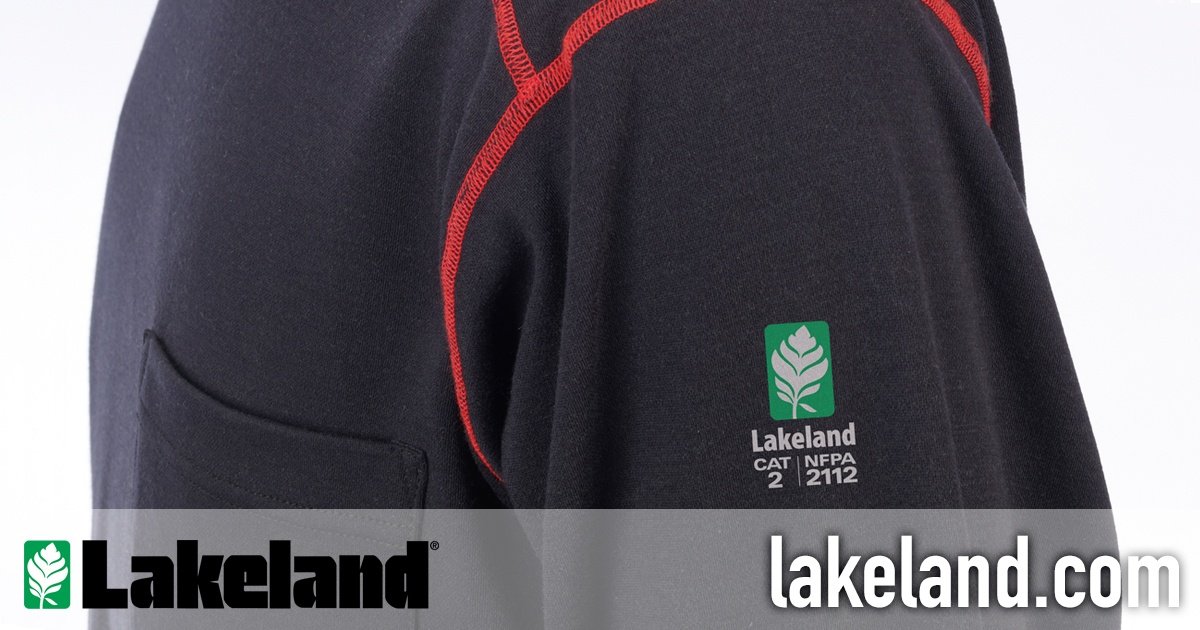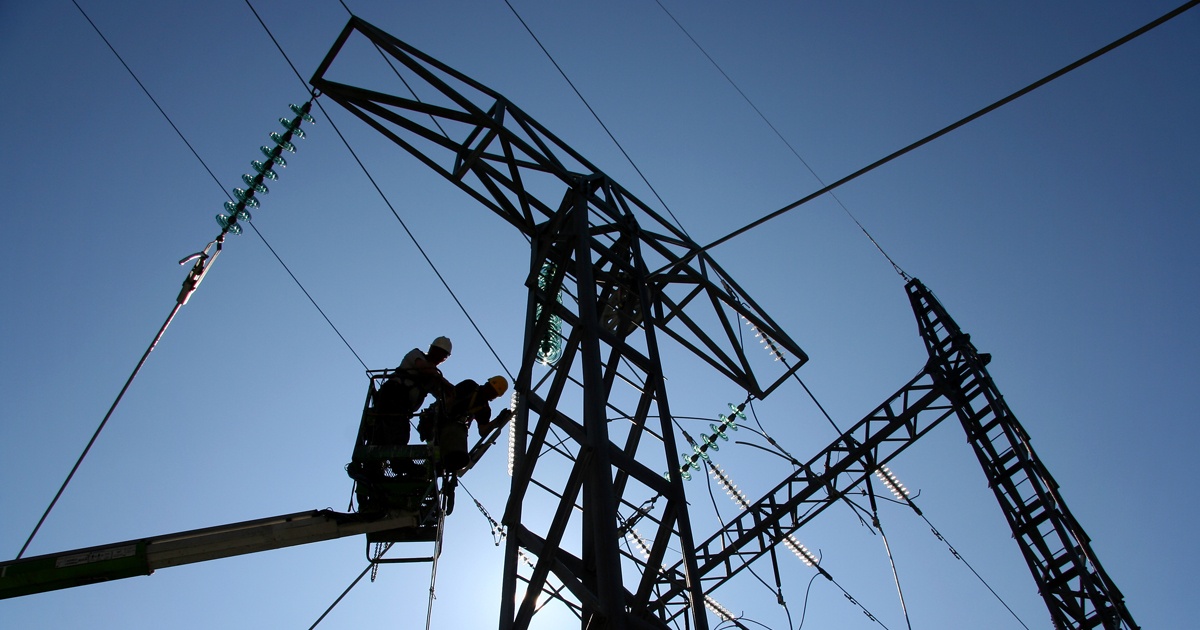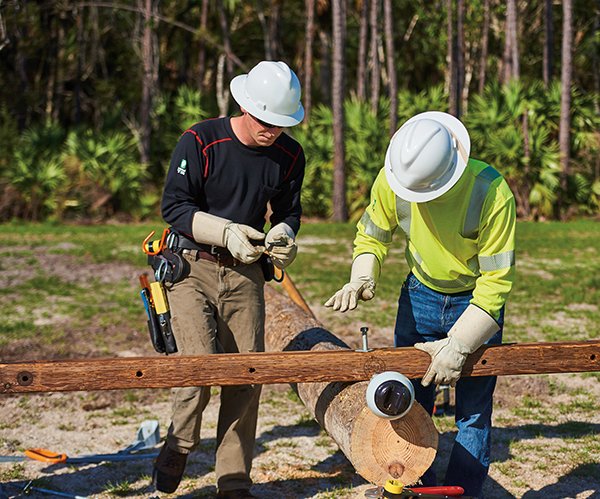
Can the use of similar high performance FR fabrics in the workplace help keep employees better focused throughout their day and achieve a better safety culture because they aren’t distracted by their clothing?
Lakeland was featured in Industrial Safety & Hygiene News as an expert on this topic. Continue reading to learn more below.
The History Of Moisture Wicking Garments
High performance, moisture wicking technology has been around for over twenty years. The fabrics were originally created to help boost athletic performance in extreme outdoor situations by keeping athletes drier and cooler in hot conditions, while warmer and drier in cold weather. These fabrics have evolved dramatically over the last few years, creating a challenge for the consumer to understand their evolution and determine which fabrics provide optimal comfort and performance.
Moisture wicking fabrics originally started with a synthetic fiber, like polyester, and the application of a chemical finish which allowed moisture to spread. Eventually the finish would wash out and the fabric lost its wicking abilities. These “original” fabrics are still in the marketplace and can be easily identified. Checking the tag on a garment will reveal its blend of fibers. A garment with 100% of any fiber, along with claims of moisture wicking, identifies the presence of a fabric with a chemical finish. You can also check to see if the manufacturer guarantees wicking for the life of the garment. If they don’t, it likely means they have used a treatment that they know will eventually wash out.
What is the Optimal Moisture Wicking Fiber Blend?
Today, the latest generations of high performance fabrics are made from a combination of fibers. The best fabrics are typically a mix of hydrophobic, water hating, fibers and hydrophilic, water loving, fibers. Hydrophobic fibers can include modacrylic, aramids, and para-aramids, while hydrophilic fibers typically include rayon and lyocell. It’s the combination of these two fibers, blended together, that ensure permanent moisture wicking for the life of a garment. The big question then becomes: What is the optimal blend of these two fibers that creates the best performance and the softest hand?
Blends of these fibers can range from 90% hydrophobic / 10% hydrophilic, down to 55% / 45%. Testing has proven that a more balanced blend, in the area of 55% hydrophobic / 45% hydrophilic, allows for better skin side pickup and transport of moisture across the fabric. If you don’t have enough hydrophilic fiber, the fabric won’t absorb well. If you don’t have enough hydrophobic fiber, the fabric will not push the moisture to the front as well. It is mastering this “balance of the blend” that creates the highest performance fabrics.
How to Choose the Best Moisture Wicking Gear
High performance fabrics have some additional key criteria, which can be measured, beyond just the ratio of the blend. The vertical wicking rate measures how fast and far moisture spreads across the fabric. Back to front moisture transport rate can also be calculated, and is critical in helping clothes dry faster, which will lessen the chance of heat rash for the wearer. This also allows more heat to escape your body helping thermo-regulation and preventing heat stress. Water Vapor Transmission Rate, or “WVTR”, calculates the “breathability” of the fabric and was developed by designers to compare and quantify just how much moisture will move or “breath” through a fabric. Each of these factors we’ve described can be extremely important in selecting the optimal fabric for your workers, but one is not more important than another. Determining which high performance fabric is better comes from understanding how the various ratios and rates affect the amount of moisture a fabric moves, as well as how the fabric distributes that moisture across the garment.
Understanding these wicking properties of high performance fabrics becomes key when workers begin to layer garments of various fabrics to stay warmer or cooler throughout the course of the work day and over the four seasons.
How to Layer FR High Performance Apparel
Layering is an important benefit from the selection of high performance fabrics. Layering allows you to wear lighter weight garments that in turn keep the body drier, and either cooler or warmer, depending on the conditions. Several lighter weight garments “layer” to keep the worker drier and warmer than a traditional, single heavy winter garment typically would. Worker functionality and mobility increases by wearing multiple, thinner, lightweight garments, the combined weight of which is substantially less than that of traditional winter wear.
Water vapor transmission (WVTR) is critical to know for mid layers, as sweatshirts and outerwear becomes the conduit to transfer moisture from fabric to fabric and away from the wearer. The higher the “WVTR”, the more moisture is spreading to the next garment.
Choosing a high performance fabric shouldn’t be difficult. Data for all the performance factors we referenced is readily available for most fabrics. Ask for it. Understand the different blends of high performance fabrics and how they perform. Smart shoppers look at the tags to determine the blend of fabrics and will look for that optimal
55% / 45% blend.
The same high performance fabrics that the world’s top athletes compete in are available to the industrial athlete as well. If you believe your team works harder over 8 hours than most athletes do for the 1 or 2 hours that they compete, then get your team into high performance wicking and layering fabrics and garments. Your team will stay focused on doing their job in the safest most efficient way possible throughout the entire workday and won’t be distracted because of the wet and clammy clothes they’re wearing.
The clothes you wear on the job, matter — for your comfort, for your performance and for your safety. Shouldn’t you choose FR gear with advanced technology and industry-leading design? It’s simple, just #AskforLakeland.
Lakeland FR performance apparel offers dual-certified protective apparel with advanced moisture wicking technology and a lightweight design with maneuverability and comfort in mind.



